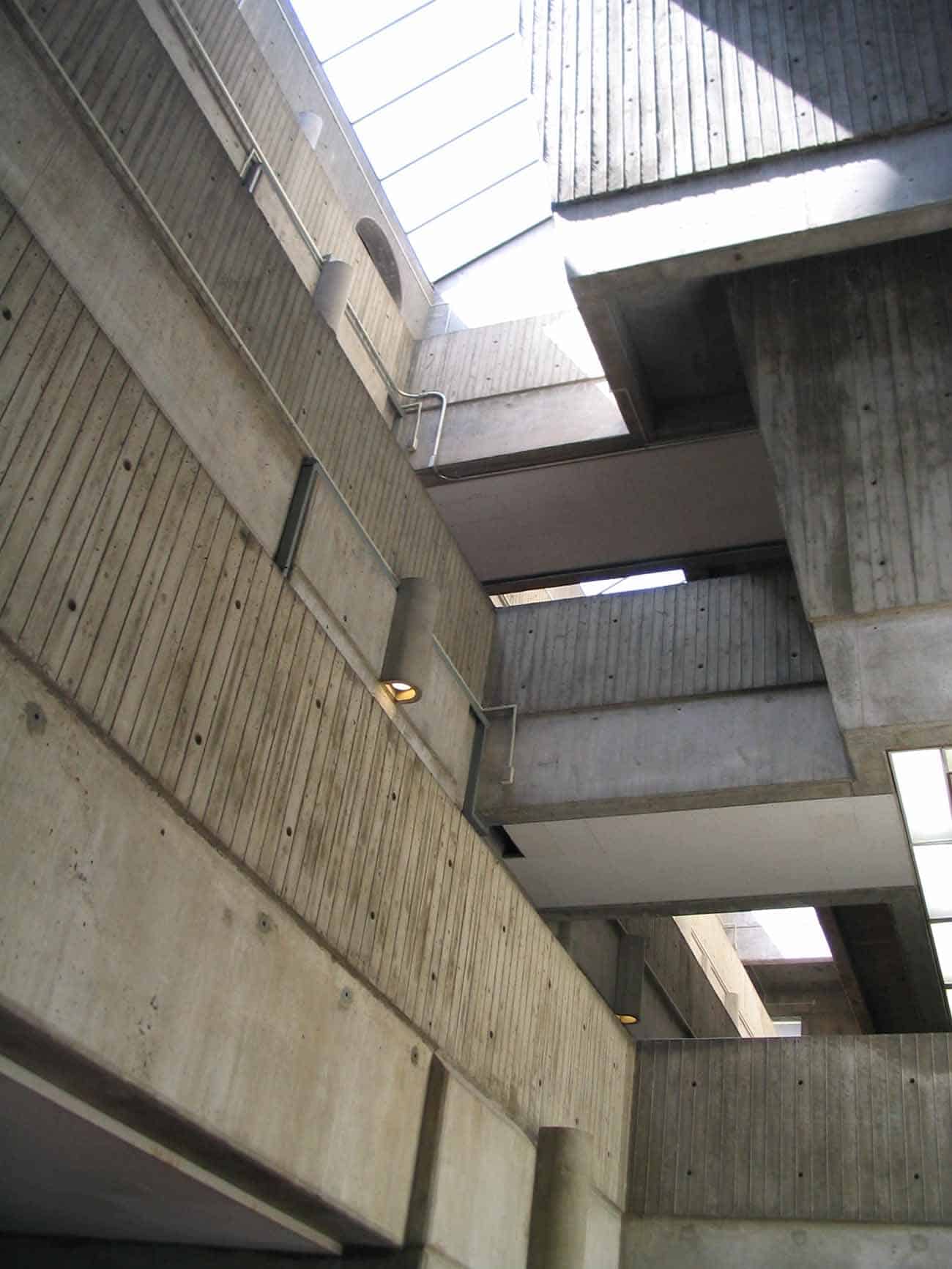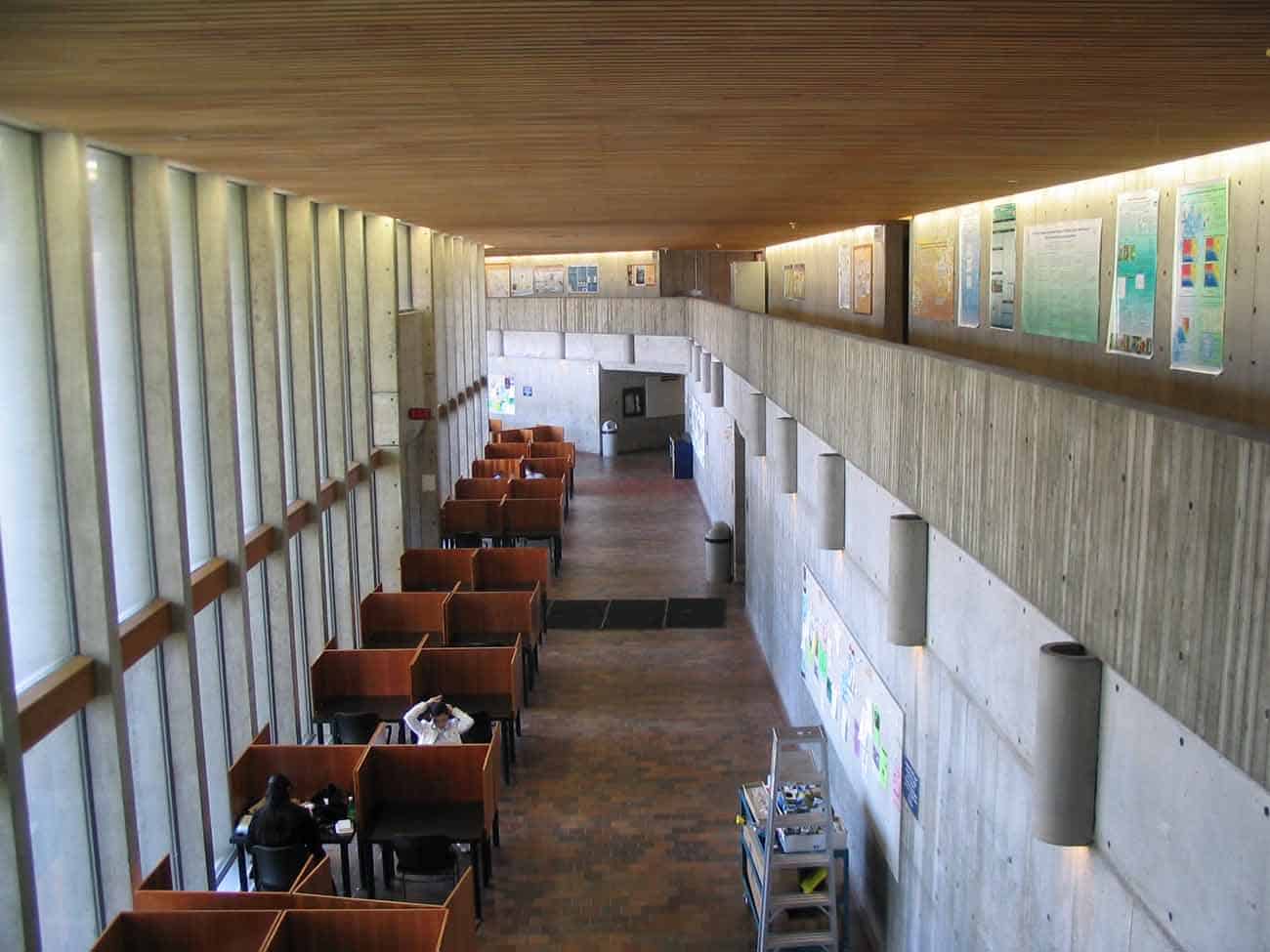Scarborough College
In response to the needs of the emerging baby-boom generation, Scarborough College was among the first in a wave of new universities established across Ontario as part of an extraordinary government investment program in post-secondary education. Founded in 1964, as the first of the University of Toronto’s suburban satellite campuses, Scarborough College was located on a greenfield site approximately 20km from the city’s urban campus. The suburban location and lack of residential accommodation in the program reflected a new mobility: students would arrive by automobile or public transit each day.
Scarborough College, influenced by the Open University in the United Kingdom, was rare as a teaching institution based on televised lectures. As described by Leon Whiteson, it was an act of educational democracy and a deliberate attempt to supersede the elitism of pre-war universities.
The master plan for the campus was developed with Michael Hugo-Brunt and Michael Hough. They worked with John Andrews and his team to locate the buildings along the edge of the Highland Creek ravine, and plan for parking and future expansion. Scarborough College was designed as a single building of over 37,000m2, snaking over one kilometre in length along the ridge of the heavily wooded ravine.
The building is comprised of two wings: the 5-storey humanities wing to the east, and the 6-storey sciences wing to the west. For protection from harsh winter weather, Andrews designed an internal climate-controlled pedestrian street that runs the entire length of the building. The two wings converge at the dramatic, multi-storey skylit ‘meeting place,’ around which administration and student services are gathered. Scarborough College, both inside and out, is characterized by the use of poured-in-place concrete.
Appreciated from the outset, Scarborough College garnered a prestigious Massey Medal. The building has come to be associated with both Brutalism and the megastructure movement of the period. The television broadcasting has long since been abandoned, and the building is now known as the Andrews Building, in honour of its architect. There was a major addition in 2008 by Moriyama and Teshima Architects, and various projects by Baird Sampson Neuert.
Today, the original Scarborough College is one of a number of buildings by distinguished architects on a much-expanded campus known as University of Toronto Scarborough. The Ontario Association of Architects recognized the building’s lasting contribution with its 25 Year Award.
Scarborough College has been characterized by Paolo Scrivano as, “an accurate testimony of a precise moment in time when issues of architectural language and technique, pedagogy and mass culture, politics and societal change, came together in a way than can rarely be found elsewhere.”














